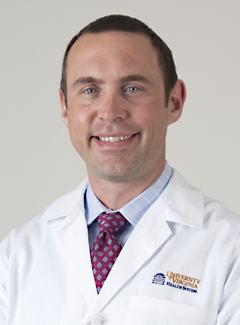
Pediatric interventional cardiology allows kids born with heart conditions to live longer while enjoying a higher quality of life. That’s why Michael Hainstock, MD, chose this specialty, and it’s what keeps him passionate about it.
Advanced imaging like fetal echocardiography has revolutionized how cardiologists care for the hearts of our smallest patients. Interventional cardiology is also an option for older children, whose heart condition may not become apparent until their provider notices something unusual at a wellness visit or sports physical.
Hainstock shares what providers should keep an eye out for, why this specialty is the right one for him, and how collaboration is part of his process.
How did you decide to focus on pediatrics?
Two of my heroes when I was growing up were my cousins, Keith and Billy Croce. They had a rare kidney condition called cystinosis, which required extensive medical therapy and several kidney transplants. Despite their daily challenges, they lived super fulfilling lives and survived into their late 40s/early 50s, which, at the time, was the longest of anyone with that condition. They taught me a ton about living life in the moment and with gratitude.
Though neither of them grew too much over 5 feet tall, to me, they will always be inspirational giants. The Croce boys started my interest in pursuing children’s well-being as a lifelong mission.
What’s your favorite thing about practicing as a specialist?
I can’t imagine a more rewarding profession than pediatric interventional cardiology. It provides multiple opportunities to help kids live longer, happier, healthier lives using cutting-edge technology and minimally invasive techniques while working with a team of ultra-high-performing specialists. Typically, the kids go home the day after the procedure with no scars and a repaired heart. It’s almost like a magic trick.
What’s something about interventional cardiology you wish more people knew?
One of the beauties of the pediatric and congenital interventional cardiology community is that we are always looking to creatively solve problems using new technologies from many other disciplines.
We partner closely with established and early-phase companies to develop unique and better ways to treat complex problems. Even if there isn’t an established therapy, creative problem-solving is at the heart (so to speak) of the profession. Feel free to come to us with interesting problems.
How can providers catch problems early? What risk factors should they look out for?
Exercise intolerance. Poor growth. Fast breathing out of proportion to exertion.
In general, screening for exercise intolerance and a focused physical exam can detect most significant issues. Fetal echocardiography has also revolutionized the early detection of congenital heart disease.
What’s your approach to working with providers who refer patients to you?
My approach centers on building strong, collaborative relationships that prioritize clear communication. I make it a priority to keep referring providers informed with timely updates about their patients, including clinical findings, treatment plans, and follow-up recommendations, using their preferred methods of communication – whether that’s secure email, phone, or EHR messages.
How do you handle meeting patients and their families as a specialist?
Meeting a new physician can be a stressful situation for the child and their family members. I do my best to meet the child at their level, speaking with them in an age-appropriate manner to help establish initial rapport and gain their trust. With the family members, I do my best to explain the heart issue in simple terms, provide the options for addressing that issue, and what each of those pathways most likely looks like. Throughout the process, I prioritize open communication, patient comfort, and collaboration with the child, their family, and their referring provider to achieve the best possible outcomes.
What does UVA Health Children’s offer patients that helps make their experience better?
UVA Health Children’s stands out by offering world-class care in a program of approachable size, ensuring that every patient receives focused, family-centered care in a supportive and personalized environment reminiscent of a boutique practice.